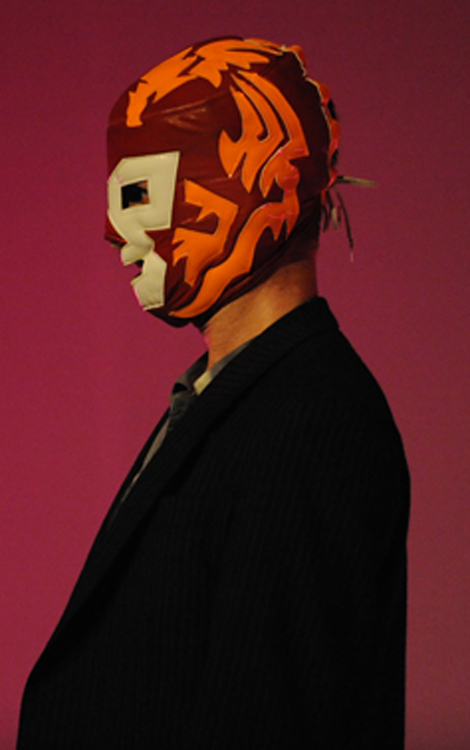The Story from the Wolf’s Perspective
18/10/2009
The display of masculinity created by Yossi Berg and Oded Graf deals with clichés about masculinity – from battles and sexuality through deep friendship and violence – and succeeds in refraining from providing a didactic message. The result is an ironic and self-aware show that contains both potential for entertainment and tragedy.
The theatrical dance “4 Men, Alice, Bach and the Deer” created by choreographers and dancers Yossi Berg and Oded Graf, is an intensive condensed and concentrated capsule of masculine display. It is exposed, explicit and noisy; it is constructed from a dizzying series of visual, structural and musical brilliancies. And all this restless abundance seeks to tell the story of four men. Not any men, but perfect men: with plenty of virility, money and power. In their enormous house there is a plasma screen the size of a wall, the refrigerator is loaded with beer and meat. They hunt, fish and live a wild natural life; they are a cluster of masculine clichés that fulfills the fantasies that men have about themselves.
The first part of the show presents a catalogue of male gestures; it is an introduction to the story that is coming. This catalogue – a coordinated display of virtuoso compositions of movement – presents a repertoire of masculinity: masculinity of battle and of love-making, of partying and quarreling, of violence and of deep friendship. Then it stops: the dancers lie breathless on the stage, and the story begins.
It is a fairy tale, spoken aloud by one of the dancers, with the others answering him in chorus. Like all fairy tales it is shocking, threatening and entertaining all at the same time. It is the story of four men who had it all, and especially each other’s company, until a pretty girl rides by their enormous house on a red bicycle. They invite her into their home to eat and stay over; she accepts.
Little Red Riding Hood, Alice in Wonderland, and Goldilocks and the Three Bears: those stories are all mixed up to serve this story. And even though a woman is at the center of each of those stories, only the men are present here. Only the men voice their version, celebrate Alice’s acceptance of their invitation, in an unbridled outburst – wonderfully comical – of gestures borrowed from high and popular society. But it gradually becomes clear that Alice did not necessarily accept; there is doubt, differing versions that are expressed in a chilling duet – both comical and threatening at the same time – between the “Yes” and the “No”. The hospitality turns into a situation of potential rape, the generosity – to violence.
“4 Men, Alice, Bach and the Deer” is not a sentimental or moving show. It is driven by conscious awareness, which fluctuates between seriousness and slapstick humor, and this irony envelops the dance in deliberate alienation. This choice is worthy of appreciation: it does not allow the audience to be shocked by the violence it displays. Feelings of shock in face of the representations of violence are a common effect of works that deal with violence; they enable the audience to distance themselves from the violence experienced on and through the stage, as well as to free themselves through it. In “4 Men, Alice, Bach and the Deer” the violence is not directed at the audience; on the contrary, it is placed there, clear and simple, and serves its purpose in the context of male friendship. It is simple and unexplained, almost necessary, and therefore it is also not presented as a physical or narrative extreme; it is the nature of things.
It is no trivial matter, to discuss violence and masculinity, or the interaction between these two cultural concepts, without presenting a critical or didactic message. However, this work refrains from self righteousness, consolation and remorse. It removes the masks – in the completely literal sense – from the connection between desire and violence, or between words of love and animal grunts. This is where its integrity lies, as well as its boldness: it presents the masculine restlessness that is driven by the need for “more” – more excitement, more power, more tests of virility. It describes it as it is: with the animal power that drives it, as well as the destructive potential it embodies.
– Omri Herzog , Achbar Online

Photo Gadi Dagon